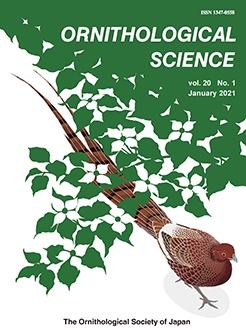Rice fields provide important inland stopover sites for migratory shorebirds. However, stopover duration and habitat use depend on the environmental conditions in the rice fields, which constantly change due to agricultural activities. This study determined the characteristics of habitat use in two shorebird species, the Wood Sandpiper Tringa glareola and Common Greenshank T. nebularia, in rice fields with different habitat conditions resulting from physical changes (field type: fields flooded after plowing, with high water levels after harrowing, or with low water levels after harrowing) and chemical changes (pesticide use: environmentally friendly or conventional farming) from agricultural activities around the time the migratory shorebirds arrive. The study was conducted during the spring stopover periods of these shorebird species in 2015 (May 2–20, 19 days) and 2016 (May 2–21, 20 days), during which we observed the characteristics of their habitat use and estimated the densities of potential prey. Both Wood Sandpiper and Common Greenshank were observed to use flooded fields with low water levels after harrowing. As for pesticide use, potential prey animals were most densely populated in environmentally friendly fields, for which only the large-bodied Common Greenshanks showed selection. This species-specific habitat use seems to be closely associated with body size-dependent prey availability and prey species selection. The small-bodied Wood Sandpiper was more affected by physical than chemical factors. These findings suggest that rice fields—major inland stopover sites for shorebirds—provide different habitats depending on agricultural activities. The study results also have practical implications for future improvement of inland shorebird habitat through efficient rice field management sensitive to the needs of migratory shorebirds.
How to translate text using browser tools
7 April 2021
The Impact of Agricultural Activities on Habitat Use by the Wood Sandpiper and Common Greenshank in Rice Fields
Green Choi,
Hyung-Kyu Nam,
Seok-Jun Son,
Min Seock Do,
Jeong-Chil Yoo
ACCESS THE FULL ARTICLE

Ornithological Science
Vol. 20 • No. 1
January 2021
Vol. 20 • No. 1
January 2021
Common Greenshank
habitat use
Korea
rice fields
Wood Sandpiper




